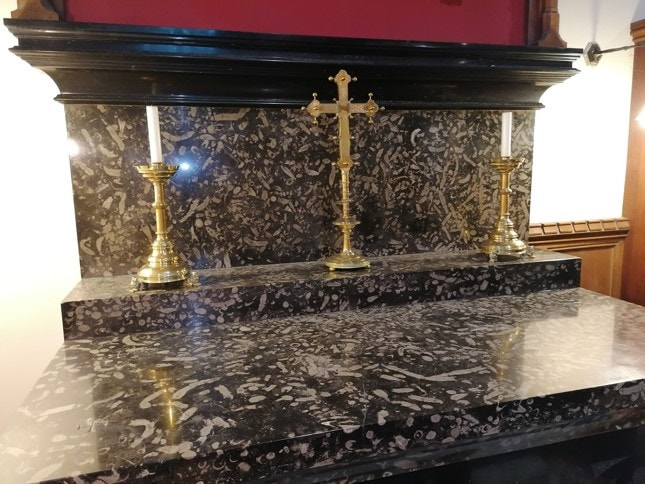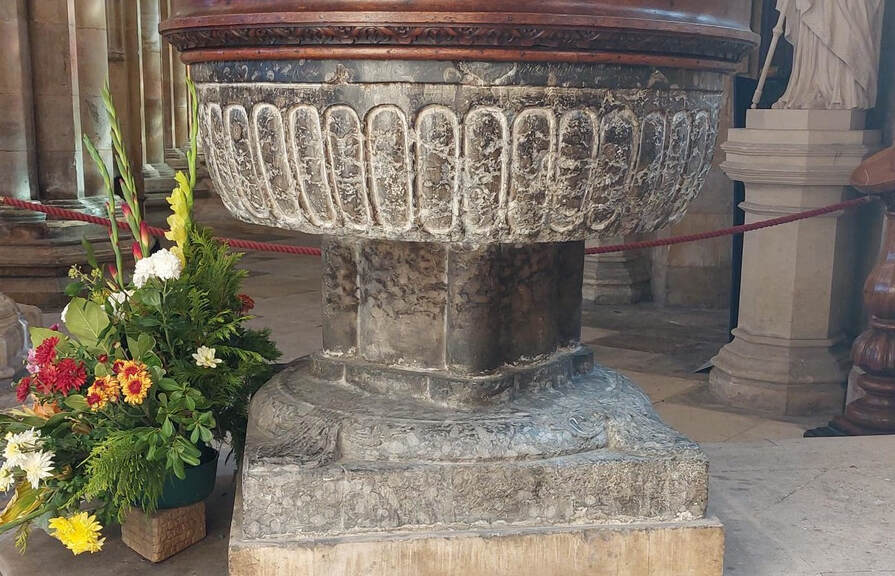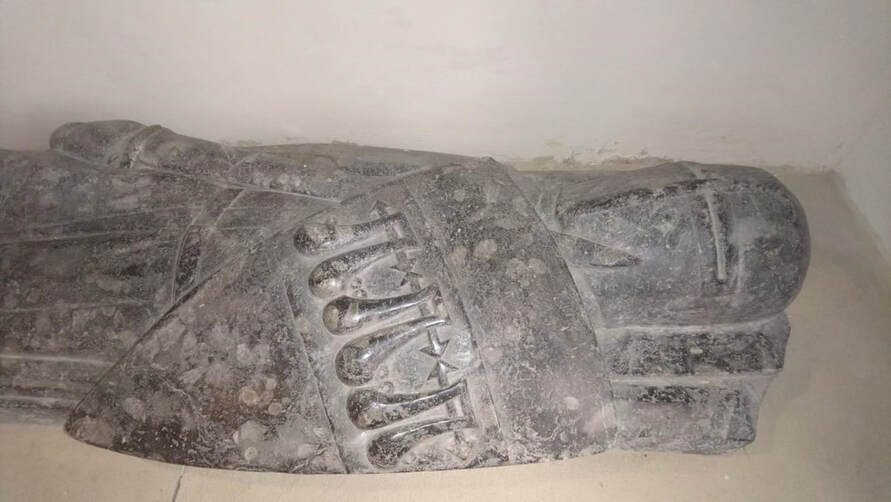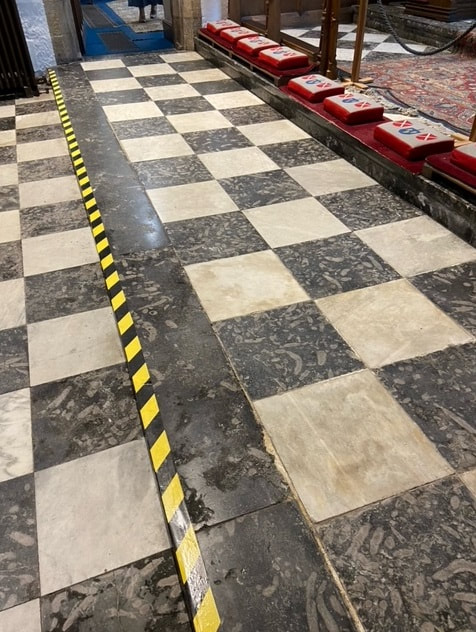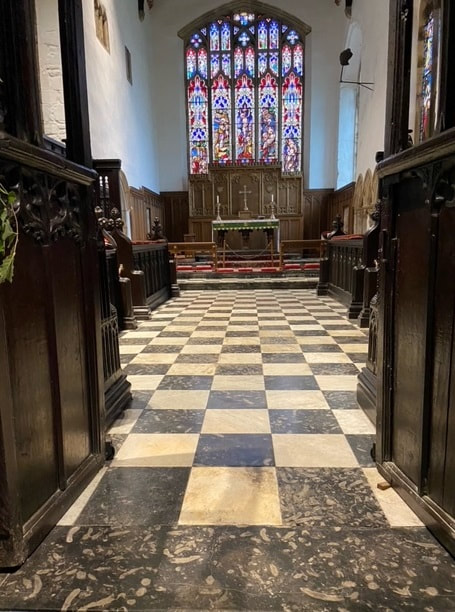Frosterley marble survey
During late 2022 and 2023, project volunteers will be visiting churches and other buildings to record as many uses of Frosterley marble as possible. All will be photographed and recorded using a standard methodology, and a comprehensive, illustrated report will be published on this website. We are currently aware of about 250 different sites, most of which are in the North East, but which extend over much of Britain and as far away as Mumbai in India and Brisbane in Australia!
Distinctive black-and-white Frosterley marble, quarried close to the village of Frosterley in Weardale, is actually limestone rather than marble. Its appearance is due to the presence of white fossils of a particular kind of coral, set within a dark grey or black matrix. The corals lived in warm, shallow tropical seas about 325 million years ago, when the place that is now Frosterley (believe it or not!) lay close to the equator. The marble was first used back in the twelfth century by the Bishops of Durham at Auckland Castle, and subsequently (and most famously) for the numerous pillars in the magnificent Chapel of the Nine Altars in Durham Cathedral. In medieval times it was also used architecturally at Tynemouth Priory and Rievaulx Abbey, and at numerous other churches, notably for fonts and graveslabs. It was imported into Scotland (seemingly in a couple of cases at the personal request of Robert the Bruce) for use at royal burial sites at Arbroath Abbey and Dunfermline Abbey.
Although we have no evidence from contemporary sources, it is tempting to suggest that the unique black stone with white fossil corals (nobody back in the twelfth century knew what fossils were!) may have been of some spiritual significance. Its use in medieval times seems to have been tied closely to the Bishops of Durham, and it may have been worked largely at Durham workshops, perhaps having been floated on rafts down the Wear from its source. The Bishops of Durham were granted the mineral rights to Weardale in 1154, and expeditions must have been undertaken in the search for lead; it may well have been during such prospecting that outcrops of Frosterley marble were first noticed exposed in the bed of the Bollihope Burn, where they can still be seen today. This would tie in with its use in the great hall (now St Peter’s Chapel) at Auckland Castle, which originally dates from about 1190. In the Bolden Book, compiled in 1183, ‘Lambert the marble cutter’ is recorded at Stanhope, and it seems reasonable to assume that he was involved in the quarrying of Frosterley marble. We don’t know exactly where the medieval quarries were; they were presumably somewhere along the line of the Bollihope Burn, and may have been destroyed by later large-scale quarrying.
n the mid-nineteenth century the railway was extended to Frosterley specifically to enable limestone quarrying for industrial purposes, and this enabled large quantities of Frosterley marble to be extracted along with all the other limestone. This was marketed commercially, and again used in Durham Cathedral. It also found its way into numerous churches not only in County Durham but throughout England and further afield, for example in Mumbai Cathedral, India, and Brisbane Cathedral, Australia. It was used most spectacularly in Norwich Catholic Cathedral, completed in 1910. It was also used in other buildings, though mostly in churches.
A database of about 250 examples, well over half of which are in north-east England, has been compiled specifically for the Belief in the North East project. Volunteers will visit, study and photograph as many as possible of these sites (we have a contact down under who is going to do Brisbane Cathedral for us!), and will discuss results at workshops to be held at places with interesting examples of Frosterley marble (sadly not including Brisbane!). We will then publish an online illustrated report, thus enabling people throughout the world to fully appreciate the extraordinary but currently little-known story of Frosterley marble.
